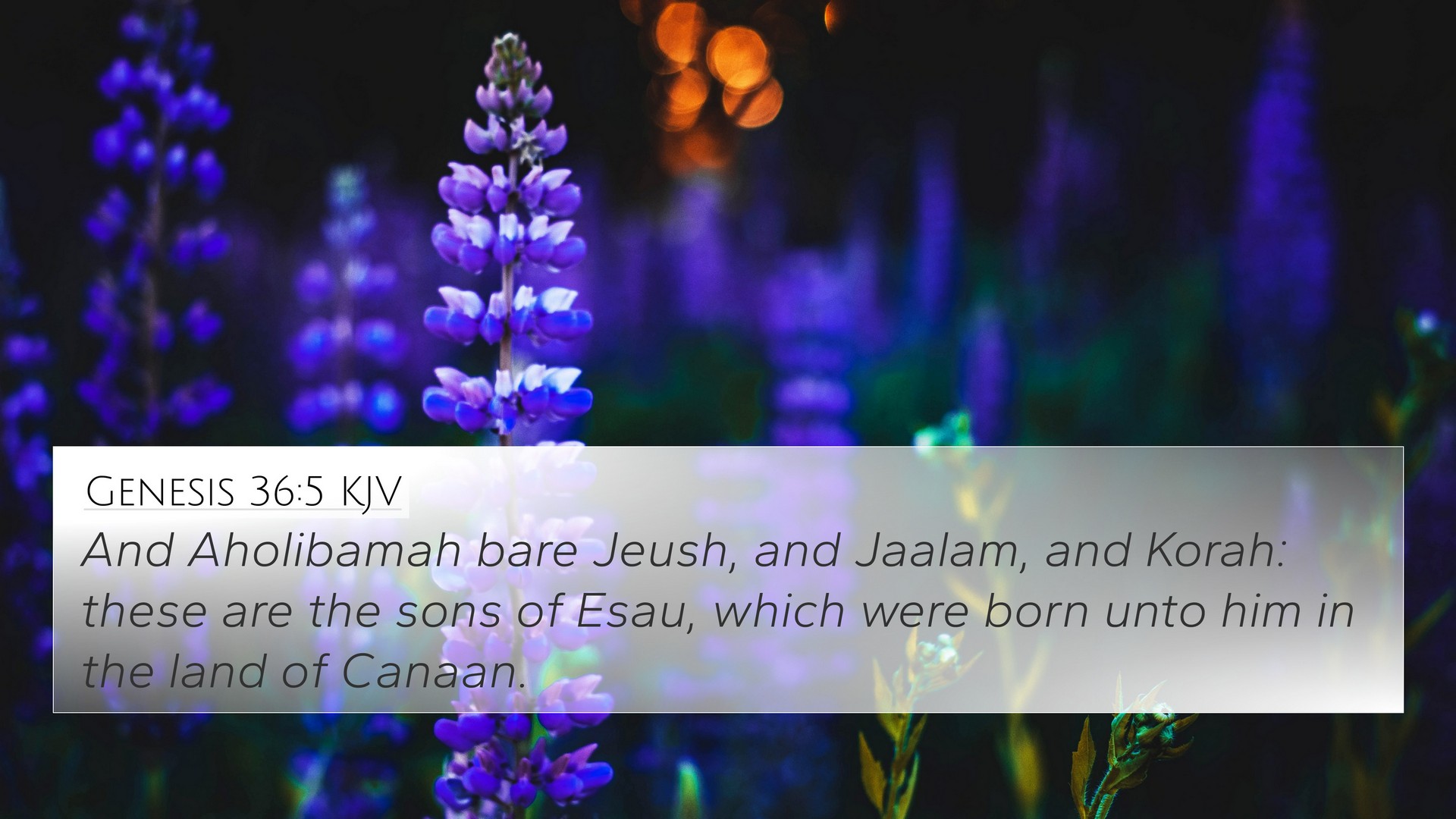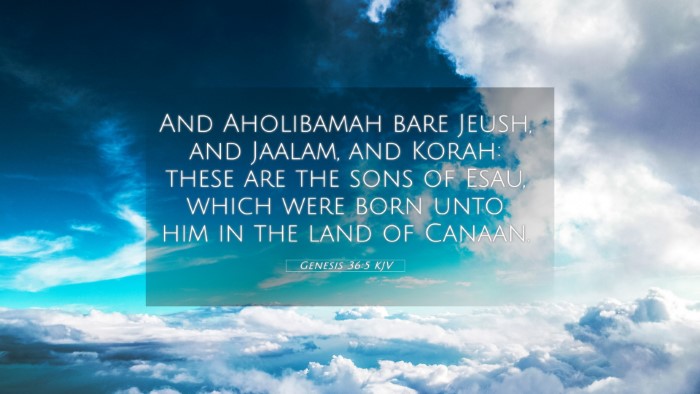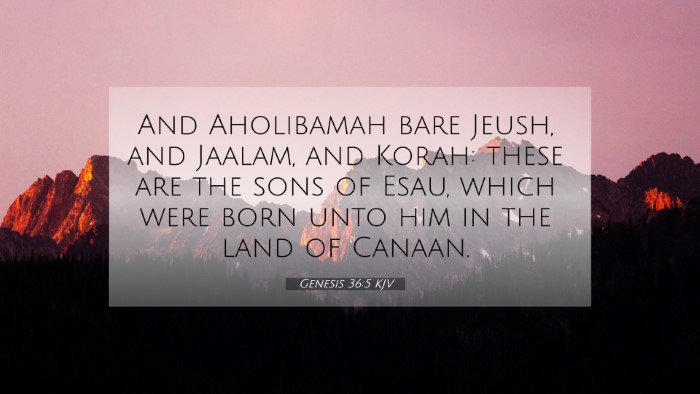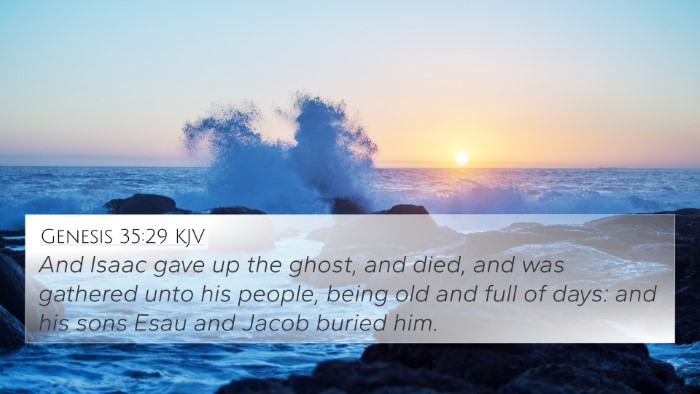Meaning of Genesis 36:5
Genesis 36:5 states, "And Aholibamah bore Jeush, and Jaalam, and Korah: these are the dukes of Edom." This verse summarizes the genealogy and tribal leadership within the descendants of Esau, who is also known as Edom. The passage serves as a critical link in biblical genealogies, illustrating the development of nations and kinship lines derived from key figures in biblical history.
Genealogical Importance
In biblical literature, genealogies often signify more than mere lineage; they encapsulate the divine plan and historical context. The mention of Aholibamah, a wife of Esau, and her sons, establishes a direct connection to the growth of the Edomite tribes.
Children of Aholibamah
The names Jeush, Jaalam, and Korah mentioned in this verse represent individual tribal leaders, each contributing to the socio-political fabric of Edom. Aholibamah’s lineage plays a significant role in understanding the formation of Edom as a prominent nation among its neighbors.
Comparative Analysis
When considering Genesis 36:5 through the lens of other scriptural references, several important connections can be made:
- Genesis 25:30-34: The background story of Esau selling his birthright, which sets the stage for understanding the Edomites.
- Genesis 36:1-3: This passage introduces Esau and his family, demonstrating the context of the verse.
- 1 Chronicles 1:35-37: Further elaboration on the descendants of Esau, confirming the significance of genealogy in Israel's history.
- Obadiah 1:10-15: A prophetic reference to Edom's eventual downfall, highlighting the importance of Edom in Biblical narrative.
- Numbers 20:14-21: Where Israel’s relationship with Edom is formalized, giving insights into the enmity and alliance that stemmed from Esau's lineage.
- Malachi 1:2-3: A divine commentary on the relationship between Jacob and Esau, reinforcing the thematic contrast between Israel and Edom.
- Hebrews 12:16-17: A New Testament reflection on Esau’s choices and their lasting implications.
Thematic Connections
The themes in Genesis 36:5 are alive in the dialogues of the Scriptures, demonstrating the enduring importance of genealogies and their implications regarding God's covenantal promises. The children of Esau are essential not only for their historical context but also for understanding broader themes such as inheritance, rivalry, and God’s unfolding plan for nations.
This exemplifies how scriptural cross-referencing can enhance biblical study and understanding, revealing underlying principles that connect various passages and enrich the narrative.
Tools for Bible Cross-Referencing
To delve deeper into the connections between Bible verses, the following tools may be useful:
- Bible Concordance: Helps locate passages related to specific themes or names.
- Bible Cross-Reference Guide: Offers listings of cross-referenced verses.
- Bible Chain References: Traces a theme or concept across scriptures.
- Comprehensive Bible Cross-Reference Materials: Provides detailed insights into complex theological themes.
Inter-Biblical Dialogue
Understanding Genesis 36:5 in connection to other texts fosters an inter-biblical dialogue, showcasing how scripture interprets itself through various layers of meaning that span both the Old and New Testaments. This dialogue enriches our comprehension of how themes like lineage, identity, and divine promise are woven throughout the biblical narrative.
Conclusion
In essence, Genesis 36:5 is a pivotal verse in understanding the genealogy of Esau and the establishment of the Edomitish tribes. Its exploration reveals deep layers of biblical significance and connection, encouraging further study through various cross-referencing methods. In having knowledge of these connections, we can appreciate the broader canvas of God's dealings with humanity as illustrated through both testimony and historical lineage.



